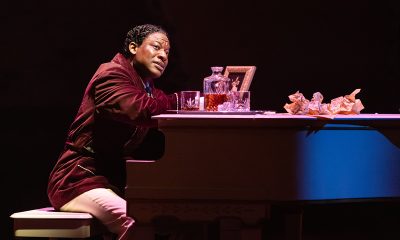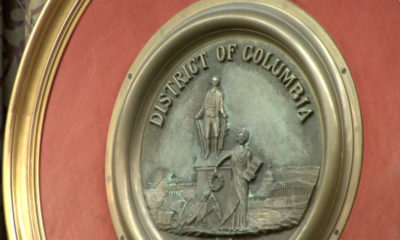Arts & Entertainment
Ready to blow the roof off
Signature brings legendary ‘Dreamgirls’ show to region
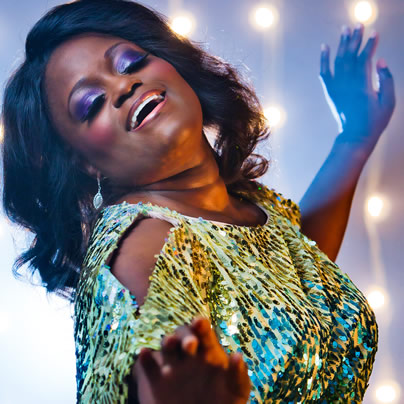
‘Dreamgirls’
Signature Theatre
4200 Campbell Ave.
Arlington, VA
Through Jan. 6
(Pride Night Dec. 7)
Tickets: start at $40
703-573-SEAT
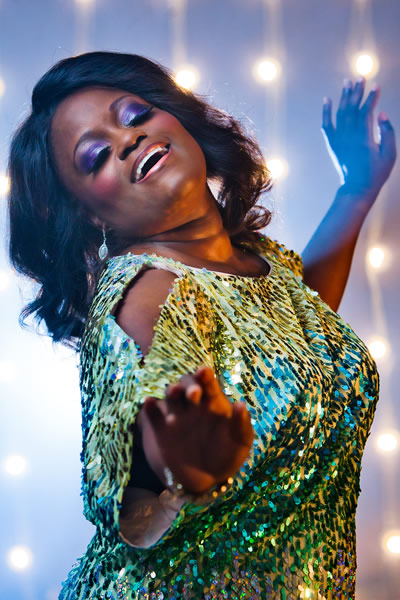
Nova Y. Payton as Effie in Signature Theatre’s ‘Dreamgirls.’ Jennifer Holliday originated the role on Broadway. (Photo by Chris Mueller; courtesy of Signature Theatre)
Arlington’s Signature Theatre is about to tackle one of the biggest shows in Broadway and Hollywood history: “Dreamgirls.”
Director and choreographer Matt Gardiner had one word to describe his initial reaction: “daunting.” For actress Nova Payton, who will be starring as Effie White, the word was “demanding.” For costume designer Frank Labovitz, the word was “huge.”
“Dreamgirls” is a show that is often tagged with the word “legendary.” It was the last major show of legendary Broadway director and choreographer Michael Bennett. It was legendary for the backstage fights during workshops, rehearsals and previews, for the 20-minute show-stopping ovation during Act I on opening night, and for the long run on Broadway, along with numerous national and international tours. It was also legendary for the staging that featured set designer Robin Wagner’s rotating towers and for Theoni’s V. Aldredge’s dazzling costumes (both of which were featured on the show’s iconic posters).
And it was legendary for the new sounds that composer Henry Krieger brought to Broadway and for the smooth cinematic way that lyricist and bookwriter Tom Eyen wove the music and dialogue together. It became legendary for a movie adaptation that won an Academy Award for “American Idol” runner-up Jennifer Hudson in her movie debut.
“Dreamgirls” tells the story of the Dreamettes, a girl group from Chicago that rises to international fame. The plot is loosely based on the saga of Diana Ross and the Supremes and other Motown-era figures. After losing a talent competition at the famous Apollo Theatre in New York, the Dreamettes are hired as back-up singers for James Thunder Early. Spurred on by their ambitious manager Curtis Taylor, Jr., the girls break away from Jimmy and begin performing as “the Dreams.” Effie White (a character somewhat based on Supremes’ founder Florence Ballard) sings lead and her friends Deena Jones (the Diana Ross figure) and Lorrell Robinson sing back-up.
Although he is having an affair with Effie, Curtis moves Deena to the front of the group. She has a smoother sound and a slicker look that he thinks will be more appealing to white audiences, enabling the group to cross over and sell more records. Although the group does become increasingly popular, Effie is not happy singing back-up and begins to suspect that Curtis is having an affair with Deena. Her suspicions are confirmed when Curtis dumps her personally and professionally.
That’s the cue for the show’s most famous number, “And I Am Telling You I’m Not Going,” which original Effie Jennifer Holliday performed twice last year in D.C. — at Pride and with the Gay Men’s Chorus.
As Act II opens and the story moves from the 1960s to the 1970s, Curtis marries Deena, who becomes an international superstar, although she yearns to be seen as a serious actress. Jimmy falls on hard times when he rejects Curtis’ advice on how to appeal to broader audiences. Effie has a child and struggles to rebuild her career. The Dreams help usher in the disco era, and the rest is music — and musical theater — history.
Faced with this challenging material and famous predecessors, Gardiner and his collaborators have developed a fresh and exciting approach to the show.
“I spent a lot of time with our design team trying to come up with a way to do it that honored Michael Bennett’s original intention but made it our own,” he says. “At Signature, we would never be able recreate Bennett’s staging, so we are trying to find our own way into it that is more Signature.”
For example, the openly gay Gardiner notes, “Bennett and the writers really played with the idea of perspective, the change between backstage and onstage. In that original production he had the use of these beautiful towers that became iconic in the way the show is remembered. From the onset, we knew that we weren’t going to do it that way. We asked how do we play with the idea of perspective, both onstage and offstage, and the whole idea of the glamorous sparkle and what’s underneath it.” To answer that, they’ve created a more intimate approach to the musical that uses a smaller ensemble and focuses more clearly on the Dreams and their leading men.
One of the things that will give Signature Theatre’s production of “Dreamgirls” a distinctive feel is Nova Y. Payton’s highly anticipated performance as Effie White. Gardiner freely admits, “It is no secret that Signature chose the piece for her and I don’t think anyone’s going to be let down.”
Maryland native Gardiner is full of praise for his star. “She’s a wonderful person first and foremost and then on top of that she has the most killer voice. She’s a spectacular actress and a spectacular singer and we’re waiting for her to blow the roof off Signature.”
D.C. native Payton returns the praise to Gardiner. “I love Matt!” she says. “This will be second show I’ve done with him. (Their first collaboration was last season’s “Zanadu.”) Matt is brilliant. His vision of the show is very clear. In rehearsal, he’s very precise about what he’s looking for but at the same time allowing us as actors to bring what we may see. We are a team trying to put this production together and he trusts us.”
Payton also has great praise for the work of costume designer Frank Labovitz, although she won’t reveal much about the fabulous costumes she will be wearing.
“I don’t want to give away too much,” she says, “because when you think about “Dreamgirls” you think about the beautiful costumes.”
But she does praise Labovitz for his innovative design. “What excited me about Frank’s renderings was how different they were from what I’ve seen before. It’s fresh and a very new feel, but it stays true to the period. And of course there are lots of sequins and bright colors and beautiful shoes and wonderful hair and makeup. You can definitely look forward to that.”
Labovitz estimates that there are about 200 costumes in the show. The Dreams alone have 11 sets of three matching dresses, plus their individual costumes with day looks and eveningwear “It’s a constant parade of costumes,” the designer says. “If an actor isn’t onstage, he’s offstage changing clothes.” Labovitz says the costumes are almost like another character in the play. They help to tell the story, detailing the changing circumstances of the characters and capturing the feel of the rapidly changing world around them. “It’s rare that you get to work on a show where the costumes are so central to telling the story.”
The costume designer is also a big fan of Hollywood’s version of “Dreamgirls.”
“One of the things that was great about the movie was how faithful they were to the original,” he says. “The movie version really maintains the character of the show.” But he adds, there’s nothing like seeing the show in a theater. “There is something magical about watching it live. Some of the moments in the show are unbelievable, like when someone does a costume change onstage in front of you and you don’t see it happen because of tricks with lights and costumes. Those moments onstage seem to defy reality.” Like when the Dreams exit in one costume and appear onstage six seconds later in a different outfit.
The opening of “Dreamgirls” at Signature Theatre will also have a special resonance for D.C.’s LGBT community. While the show is a favorite for gay and lesbian audiences, the show’s signature song, “And I Am Telling You I’m Not Going” has long been a special favorite for drag queens in the nation’s capital and around the world. Many of D.C.’s leading ladies of drag will no doubt be rotating the song back into their act. And that’s fine with Nova Payton, who says, “I love seeing the ladies do what they do.”
Frank Labovitz also offers some advice about tackling the song: “It’s all about the attitude. It’s about owning it, about being as fiercely tenacious as you can be. It’s larger than life and it’s expressing an emotion we’re all familiar with, the idea that we’re not ready to move on yet.”
In the meantime, Matt Gardiner says theatergoers can expect one of the largest productions that Signature has ever done.
“It will blow people away,” he says.
Books
‘Dogs of Venice’ looks at love lost and rediscovered
A solo holiday trip to Italy takes unexpected turn

‘The Dogs of Venice’
By Steven Crowley
c.2025, G.P. Putnam & Sons
$20/65 pages
One person.
Two, 12, 20, you can still feel alone in a crowded room if it’s a place you don’t want to be. People say, though, that that’s no way to do the holidays; you’re supposed to Make Merry, even when your heart’s not in it. You’re supposed to feel happy, no matter what – even when, as in “The Dogs of Venice” by Steven Rowley, the Christmas tinsel seems tarnished.

Right up until the plane door closed, Paul held hope that Darren would decide to come on the vacation they’d planned for and saved for, for months.
Alas, Darren was a no-show, which was not really a surprise. Three weeks before the departure, he’d announced that their marriage wasn’t working for him anymore, and that he wanted a divorce. Paul had said he was going on the vacation anyhow. Why waste a perfectly good flight, or an already-booked B&B? He was going to Venice.
Darren just rolled his eyes.
Was that a metaphor for their entire marriage? Darren had always accused Paul of wanting too much. He indicated now that he felt stifled. Still, Darren’s unhappiness hit Paul broadside and so there was Paul, alone in a romantic Italian city, fighting with an espresso machine in a loft owned by someone who looked like a frozen-food spokeswoman.
He couldn’t speak or understand Italian very well. He didn’t know his way around, and he got lost often. But he felt anchored by a dog.
The dog – he liked to call it his dog – was a random stray, like so many others wandering around Venice unleashed, but this dog’s confidence and insouciant manner inspired Paul. If a dog could be like that, well, why couldn’t he?
He knew he wasn’t unlovable but solo holidays stunk and he hated his situation. Maybe the dog had a lesson to teach him: could you live a wonderful life without someone to watch out for, pet, and care for you?
Pick up “The Dogs of Venice,” and you might think to yourself that it won’t take long to read. At under 100 pages, you’d be right – which just gives you time to turn around and read it again. Because you’ll want to.
In the same way that you poke your tongue at a sore tooth, author Steven Rowley makes you want to remember what it’s like to be the victim of a dead romance. You can do it here safely because you simply know that Paul is too nice for it to last too long. No spoilers, though, except to say that this novel is about love – gone, resurrected, misdirected – and it unfolds in exactly the way you hope it will. All in a neat evening’s worth of reading. Perfect.
One thing to note: the Christmas setting is incidental and could just as well be any season, which means that this book is timely, no matter when you want it. So grab “The Dogs of Venice,” enjoy it twice with your book group, with your love, or read it alone.
The Blade may receive commissions from qualifying purchases made via this post.
a&e features
Local, last-minute holiday gift ideas
Celebrate the season while supporting area businesses

The DowntownDC Holiday Market is bustling. Union Station is decked out with its annual Christmas tree. Washingtonians have wrapped their houses and apartment balconies with festive lights and holiday decorations. The holiday season is here. And with stockings to fill and empty space under the tree, Washington’s local shops and artists have plenty to offer.
Show your LGBTQ and D.C. pride with the Washington Blade’s annual holiday gift guide.
To embrace the holiday buzz: The Blanco Nwèl cocktail from Alchy Cocktails. This Caribbean eggnog is one of Alchy Cocktail’s seasonal holiday cocktails. The flavor profile is similar to coquito, a traditional Puerto Rican Christmas drink with a coconut base. As a queer and Caribbean-owned business, Alchy Cocktails has been based out of Washington since 2021. Blanco Nwèl is available in both cocktail ($24) and mocktail ($12) online and at a variety of holiday markets, including the Tingey Plaza Holiday Market, the Flea Market at Eastern Market, Union Station’s Main Hall Holiday Market, and more. ($24)

A spicy bite: Gordy’s Cajun Okra from Salt and Sundry. These spicy, tangy pickles pull on Southern Cajun-style flavors, packing a punch with paprika, cayenne, and more. Gordy’s is an LGBTQ-owned and Washington-based brand, making this gift an opportunity to support a local LGBTQ business straight from the jar. This pantry staple is available on Salt & Sundry’s website and at its locations in Union Market, Logan Circle, and its Georgetown holiday pop-up store. ($14)


To celebrate Washington pride: The DC Landmark Tote Bag from The Neighborgoods. Native Washingtonians, visitors, friends and family alike will find something to love about this Washington-themed tote bag. Food trucks, the 9:30 Club, the Metro logo and pandas from the National Zoo are just some of the city’s landmarks depicted across the tote in a red, white, and blue color palette. The tote is a part of the DC Landmarks collection, which donates 10 percent of its sales to the American Civil Liberties Union. The Neighborgoods itself is a local, woman-owned business built out of a passion for screen-printing in 2013. The 100 percent cotton canvas tote is for sale online or at the DowntownDC Holiday Market. ($22)
To give friends and family their flowers: The Flowers Bandana from All Very Goods. This 100 percent cotton bandana was designed in Washington and hand printed in India. Its uniqueness comes in being covered with the faces of Black women, representing a “love letter to all women but especially Black women,” according to All Very Goods. The Black woman-owned and operated business, based out of Northwest Washington, has a mission to celebrate diversity and representation through its products. The bandana intends to give Black women their “flowers.” The Flowers bandana is available for purchase online. ($24)

To unlock culinary creativity: The Curious Chef Gift Collection from Each Peach Market. This customizable collection of kitchen oddities — ranging from tinned fish to chili oil — is a quirky gift for the most inventive chefs. The collection is available in a Standard Santa, Extra Goodies and Super Holiday Size for up to $165. The Washington-based market, founded in 2013, permits customers to make the collection special by specifying what unique ingredients are packaged, including products made by local or LGBTQ brands. Each Peach Market offers assembly and pick up in-person at its Mount Pleasant shop and also offers local delivery and nationwide shipping via its website. ($85)

To give a touch of sweetness: The DC Landmark Chocolate Covered Oreo Holiday Cookies from Capital Candy Jar. Wrapped in a festive red bow, this box of nine cookies embraces love for Washington and the holiday season in one. Among the dark and milk chocolate covered cookies are images of the U.S. Capitol, the White House, the Lincoln Memorial, the Jefferson Memorial and festive hollies. The treat, packaged in a Hill East facility just a few blocks from the Capitol, is available for purchase online and at the DowntownDC Holiday Market. ($23.95)


To celebrate queer gaming: Thirsty Sword Lesbians from Labyrinth Games & Puzzles. This roleplaying game embraces lesbian culture by unlocking a world of swords, romance, and battle. Ideal for group settings, the book presents a system of world building and character identities that are best brought to life by creative minds. Labyrinth, which has been a local Washington business for more than 15 years, celebrates non-digital fun through games and puzzles that connect the community. This gift is offered online and at Labyrinth’s Capitol Hill location. ($29.99)
To make a bold statement: The “Resist” T-shirt from Propper Topper. This locally screen-printed black tee features the Washington flag designed within a raised fist, symbolizing both Washington pride, and political resistance. The shirt is made exclusively by Propper Topper, a local Washington business that evolved from a hat shop to a gift store since opening in 1990. The tri-blend unisex shirt is available both for pickup at Propper Topper’s Cathedral Heights location and shipping via the online site. ($32)

To keep it c(g)lassy: The Glass Ball earrings from Blue Moon Aquarius. Gifting can rarely go wrong when it comes to a new pair of earrings. The unique statement earrings — made of polymer clay, glass, and 18k gold plating over surgical steel — are hand cut, sanded and assembled in Washington, meaning each set is unique. Blue Moon Aquarius, a local brand, is known for its small batch jewelry and home decor designed with clay materials. Available in oxblood, hunter green, lavender, and bluestone color palettes, these earrings are available for purchase on Blue Moon Aquarius’ website and at the DowntownDC Holiday Market. ($48)

To elevate a holiday tea or charcuterie party: The Honey Flight: Tea Lover’s Selection from BannerBee. This local honey company presents the ideal gift to make cozying up with a cup of tea slightly more special. The Honey Flight contains three types of raw wildflower honey infused with fair trade Ugandan vanilla bean, chai spices, and locally sourced lemon thyme herb. The gift is also an opportunity to uplift a family company based in the Mid-Atlantic that offers all-natural, sustainable products. The flight is available online, at the DowntownDC Holiday Market or at the Arlington Courthouse and Dupont Farmers’ Markets. ($36)

For Baltimore shoppers: If you’re in Charm City, don’t miss Balston Mercantile, opened by a gay couple in June. Their gorgeous shop in the Hampden neighborhood offers an array of unique, upscale finds, from barware and artwork to cookbooks and home decor and more. (849 W. 36th St.)
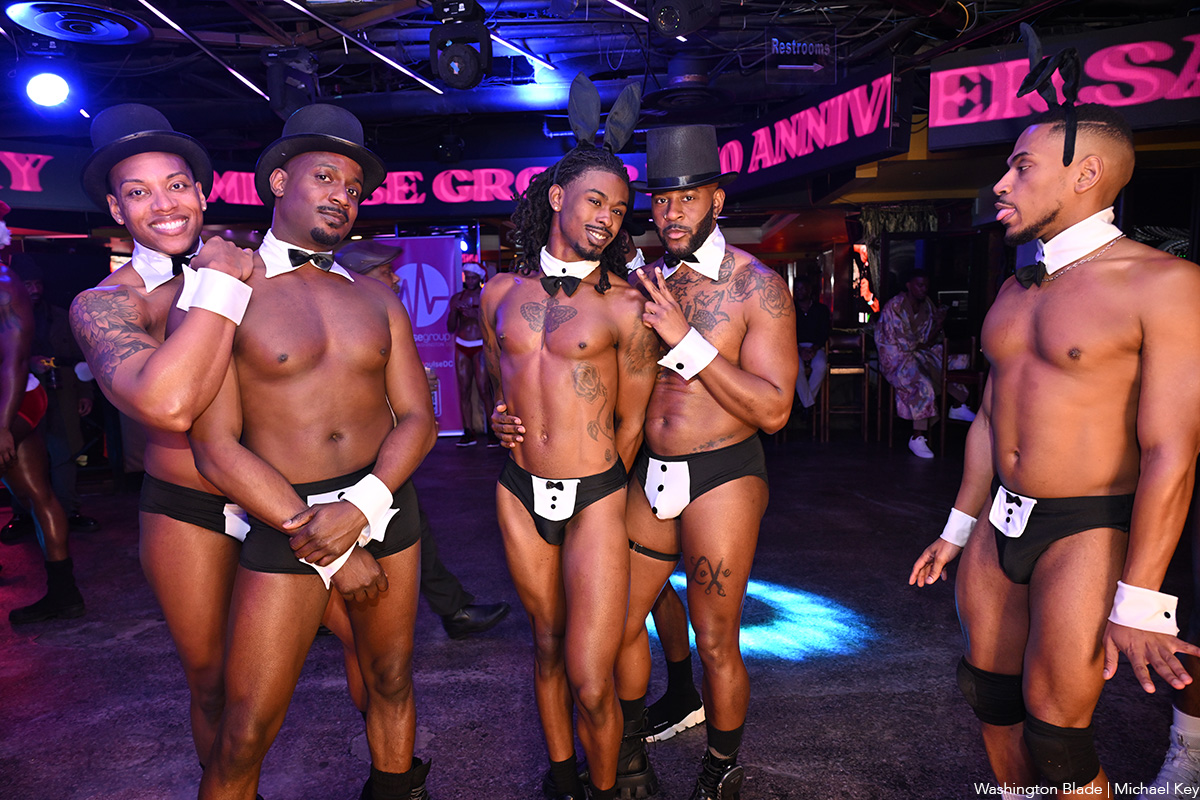
Impulse Group DC held “10’s Across the Board: A Celebration of 10 Years” at Bravo Bravo (1001 Connecticut Ave., N.W.) on Sunday, Dec. 14. Impulse Group DC is a volunteer-led 501(c)(3) and affinity group of AIDS Healthcare Foundation dedicated “to engaging, supporting, and connecting gay men” through culturally relevant health and advocacy work.
(Washington Blade photos by Michael Key)
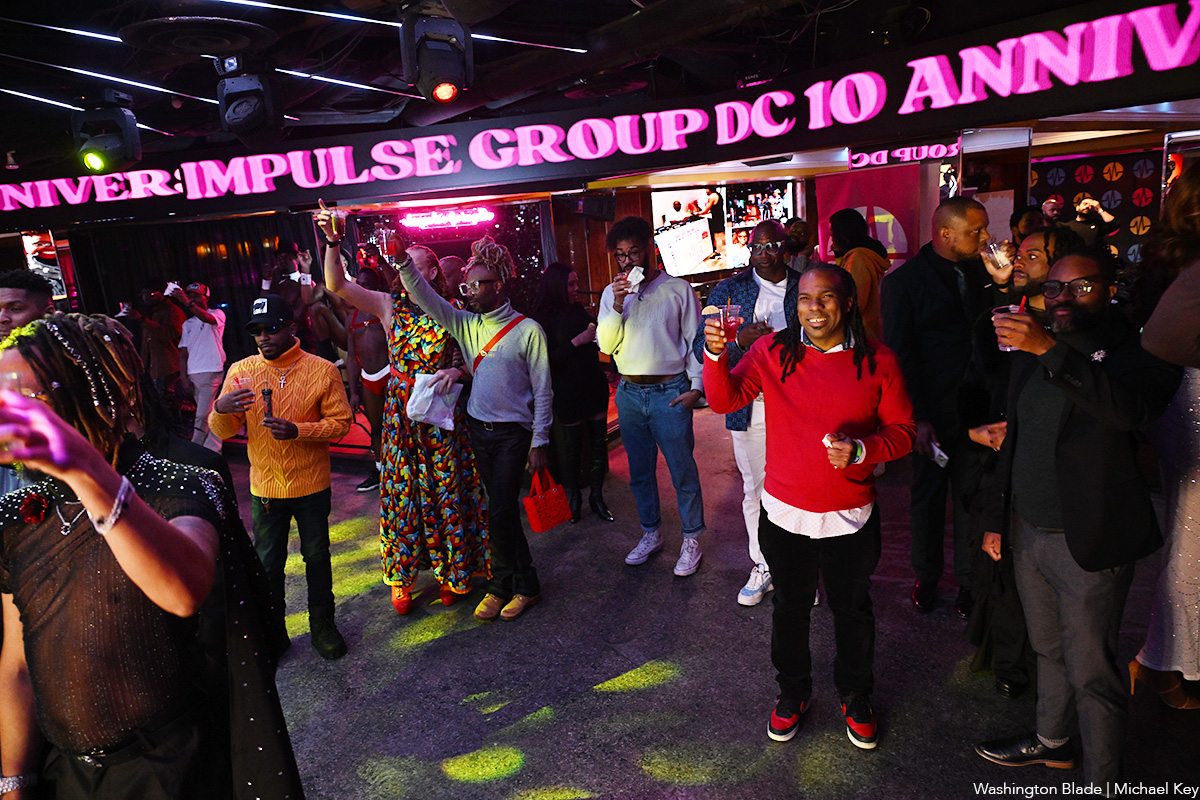


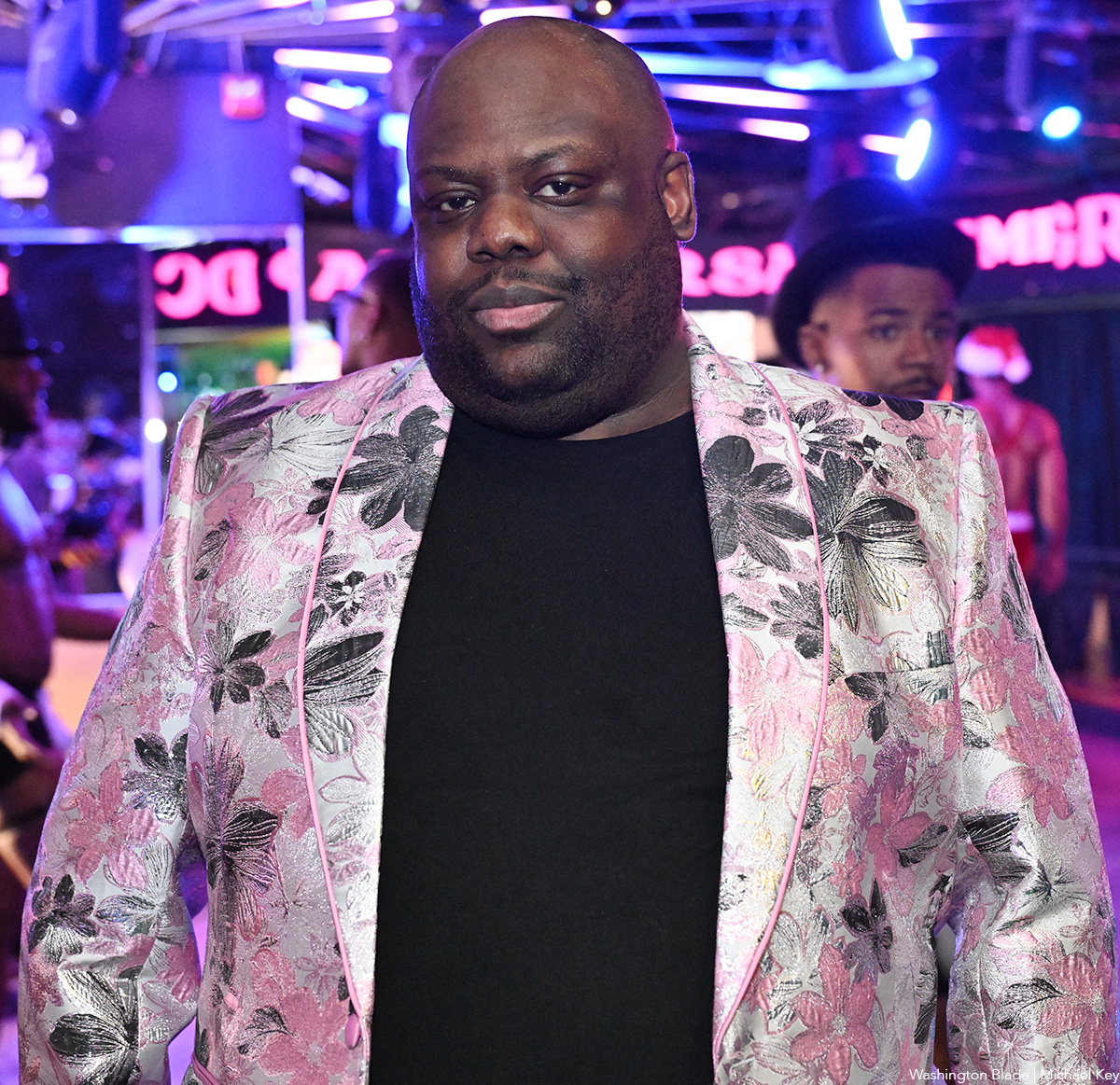

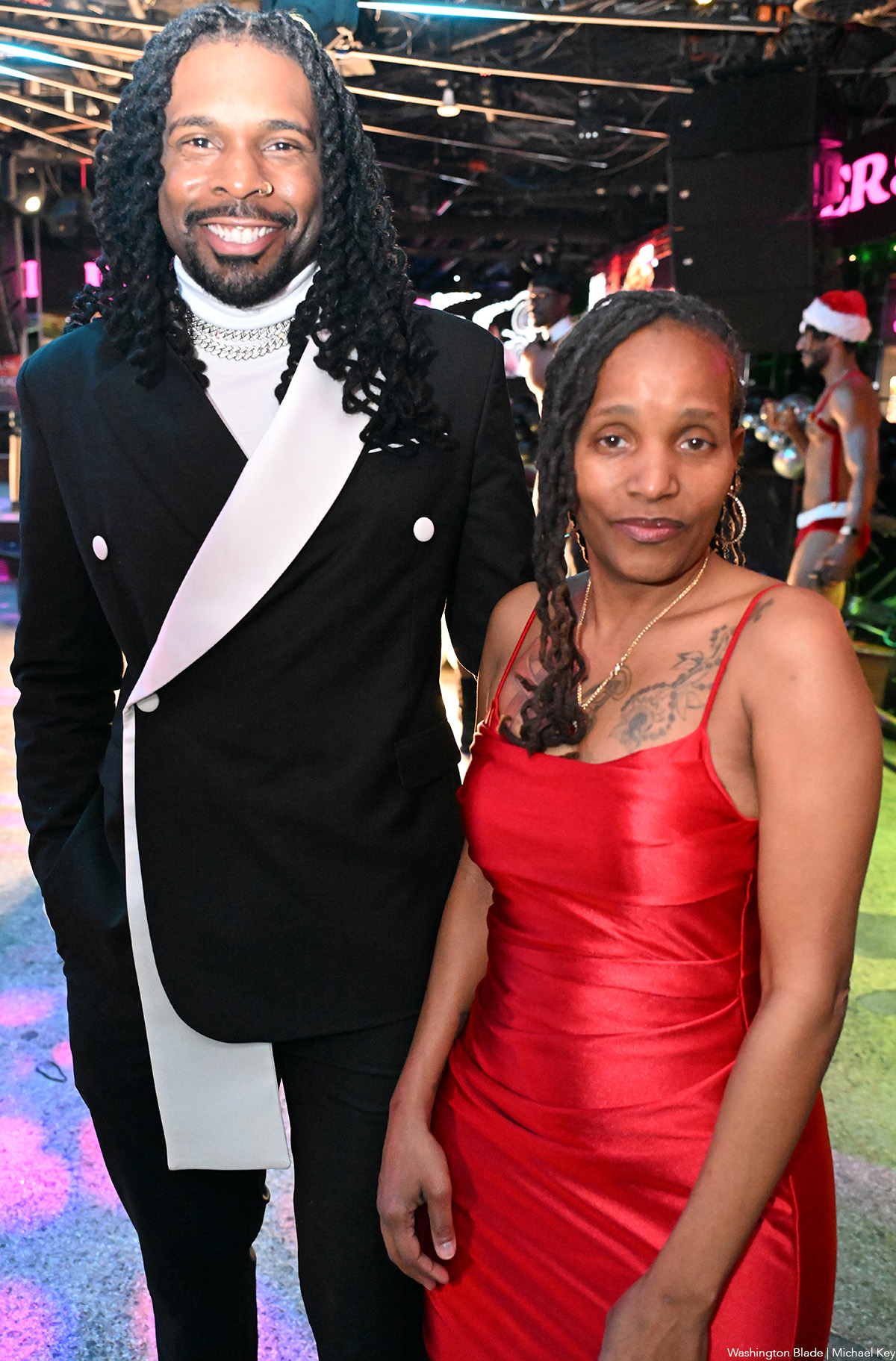
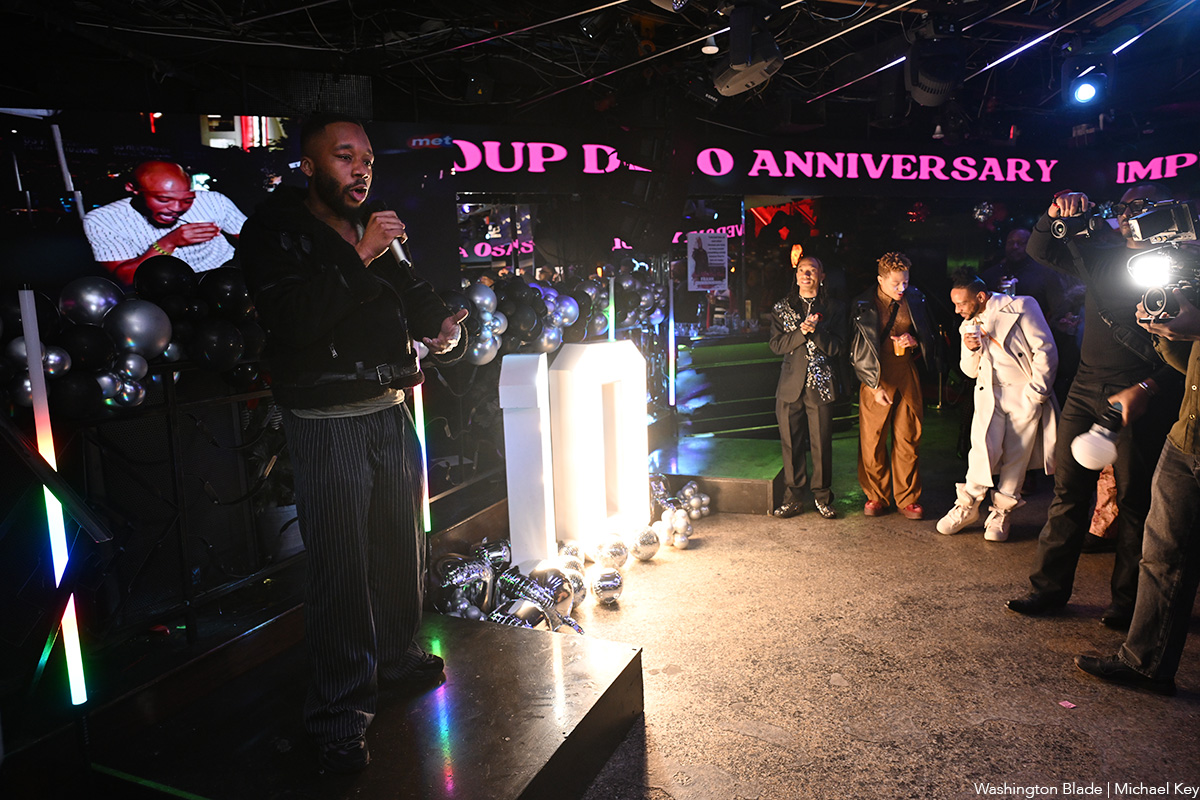
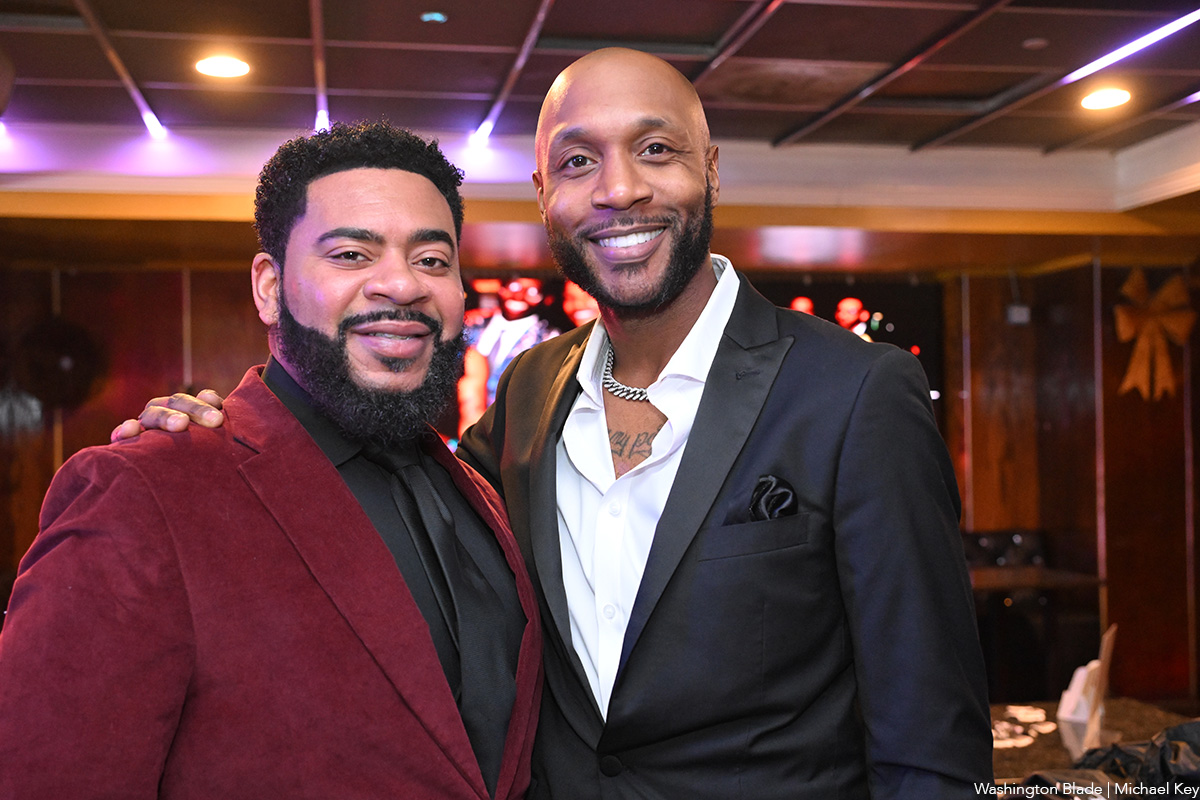
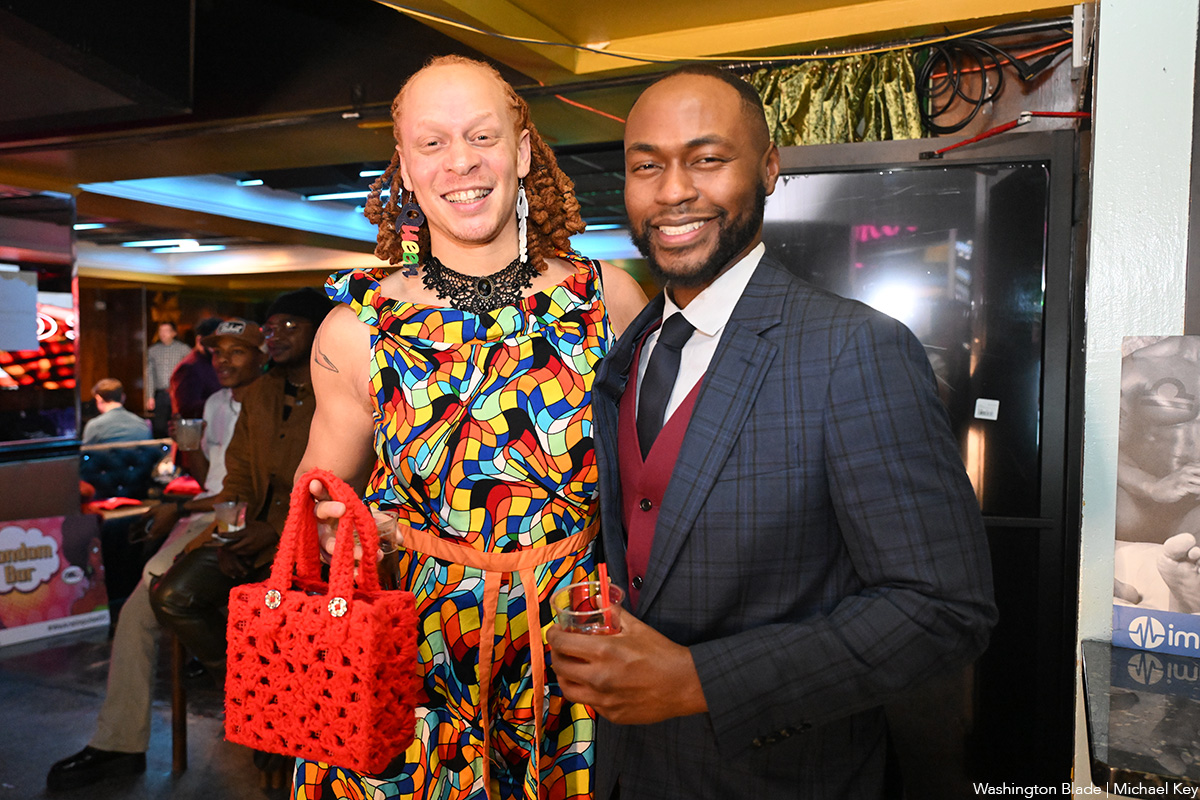
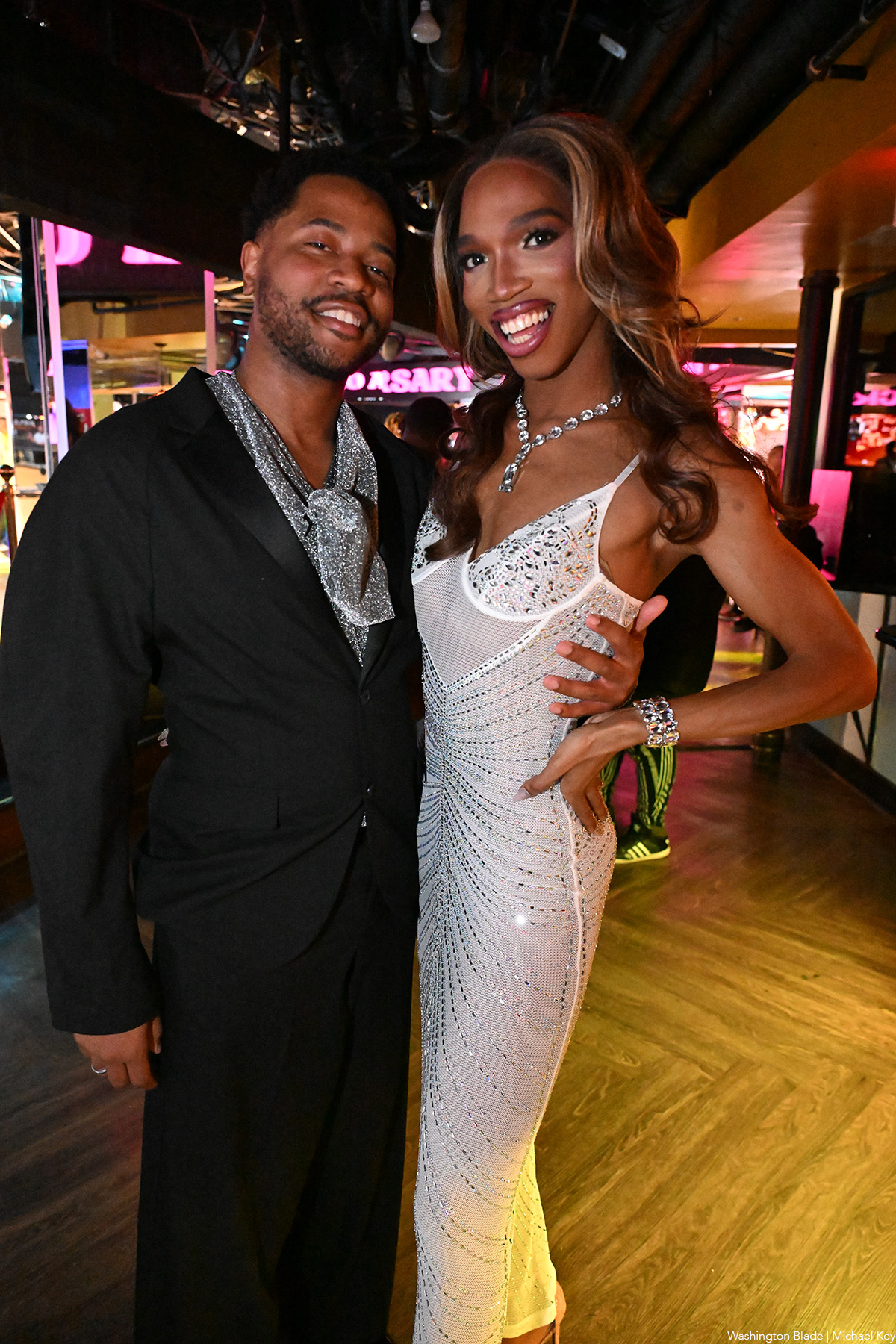
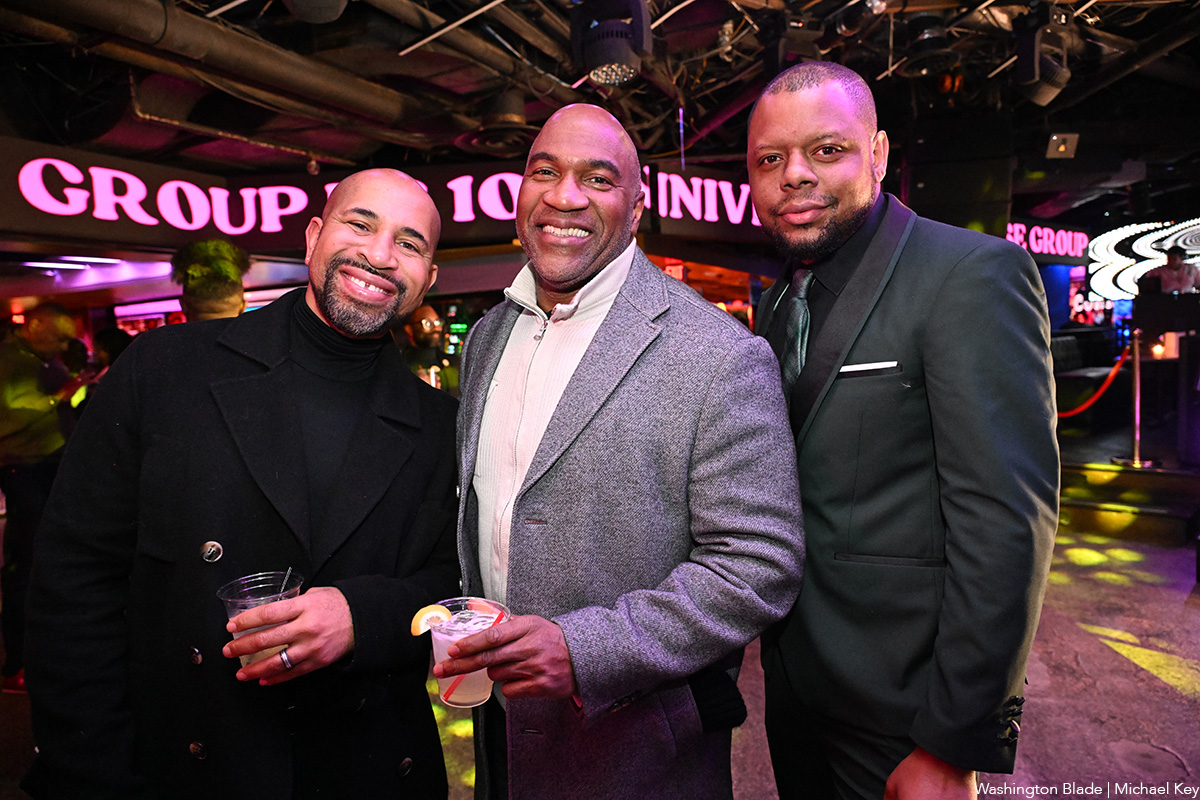

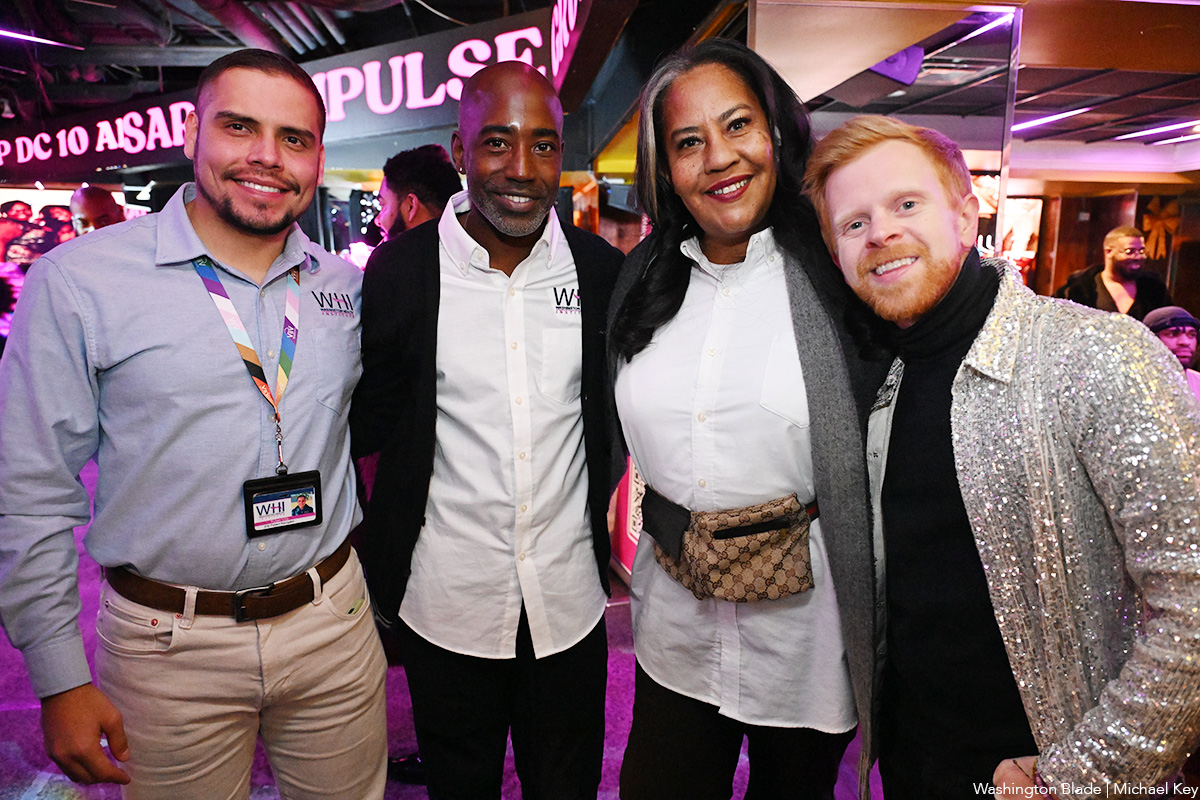
-

 Politics4 days ago
Politics4 days agoLGBTQ Democrats say they’re ready to fight to win in 2026
-

 District of Columbia4 days ago
District of Columbia4 days agoBrian Footer suspends campaign for Ward 1 D.C. Council seat
-

 Opinions4 days ago
Opinions4 days agoLighting candles in a time of exhaustion
-

 Opinions3 days ago
Opinions3 days ago2026 elections will bring major changes to D.C. government

